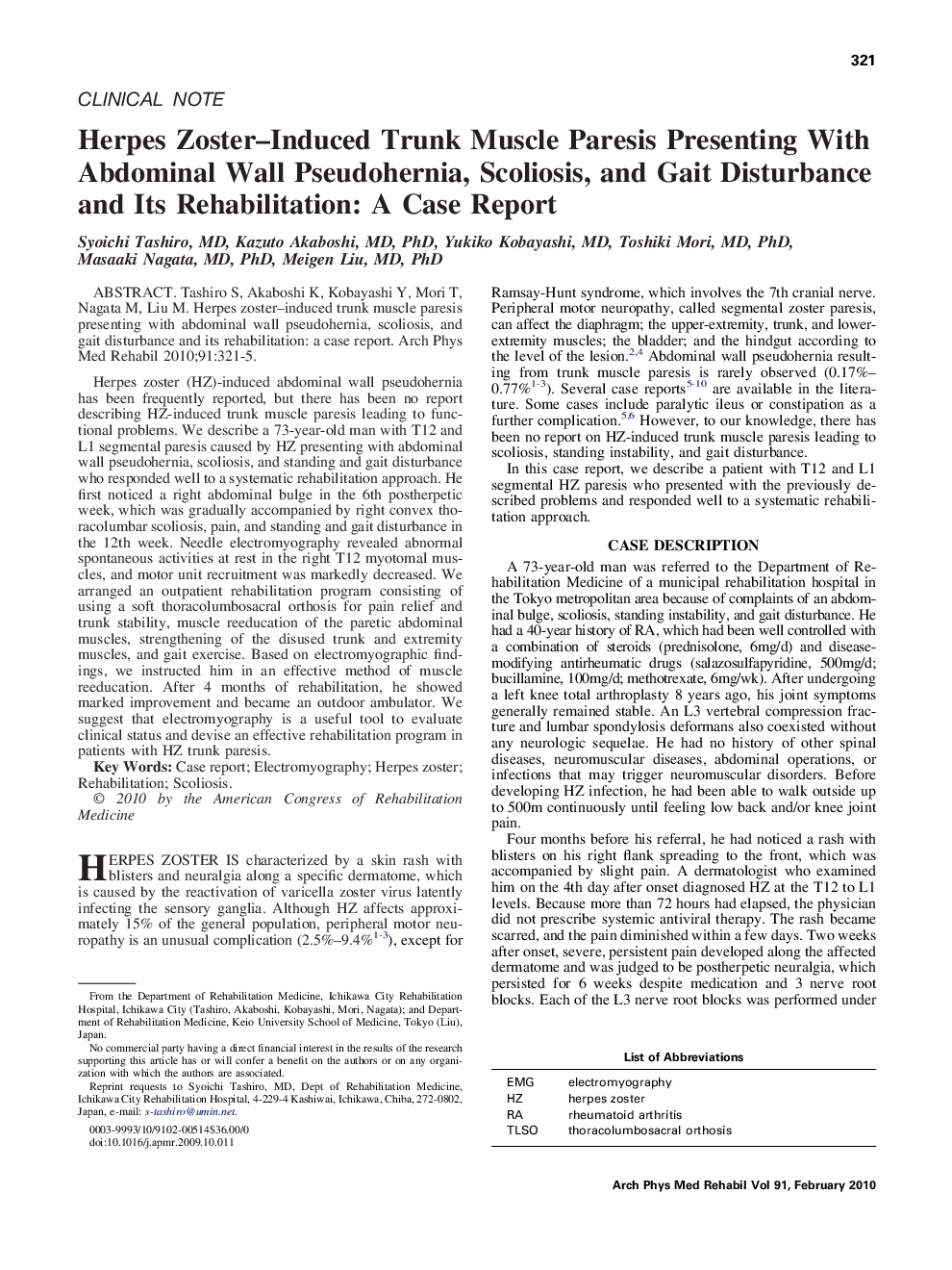| Article ID | Journal | Published Year | Pages | File Type |
|---|---|---|---|---|
| 3451398 | Archives of Physical Medicine and Rehabilitation | 2010 | 5 Pages |
Tashiro S, Akaboshi K, Kobayashi Y, Mori T, Nagata M, Liu M. Herpes zoster–induced trunk muscle paresis presenting with abdominal wall pseudohernia, scoliosis, and gait disturbance and its rehabilitation: a case report.Herpes zoster (HZ)-induced abdominal wall pseudohernia has been frequently reported, but there has been no report describing HZ-induced trunk muscle paresis leading to functional problems. We describe a 73-year-old man with T12 and L1 segmental paresis caused by HZ presenting with abdominal wall pseudohernia, scoliosis, and standing and gait disturbance who responded well to a systematic rehabilitation approach. He first noticed a right abdominal bulge in the 6th postherpetic week, which was gradually accompanied by right convex thoracolumbar scoliosis, pain, and standing and gait disturbance in the 12th week. Needle electromyography revealed abnormal spontaneous activities at rest in the right T12 myotomal muscles, and motor unit recruitment was markedly decreased. We arranged an outpatient rehabilitation program consisting of using a soft thoracolumbosacral orthosis for pain relief and trunk stability, muscle reeducation of the paretic abdominal muscles, strengthening of the disused trunk and extremity muscles, and gait exercise. Based on electromyographic findings, we instructed him in an effective method of muscle reeducation. After 4 months of rehabilitation, he showed marked improvement and became an outdoor ambulator. We suggest that electromyography is a useful tool to evaluate clinical status and devise an effective rehabilitation program in patients with HZ trunk paresis.
